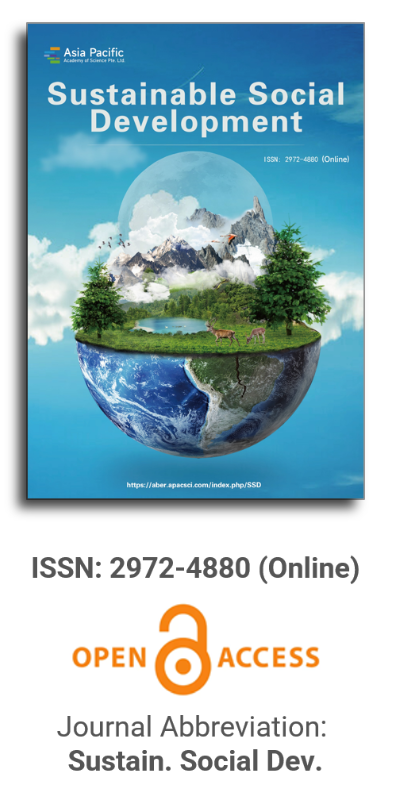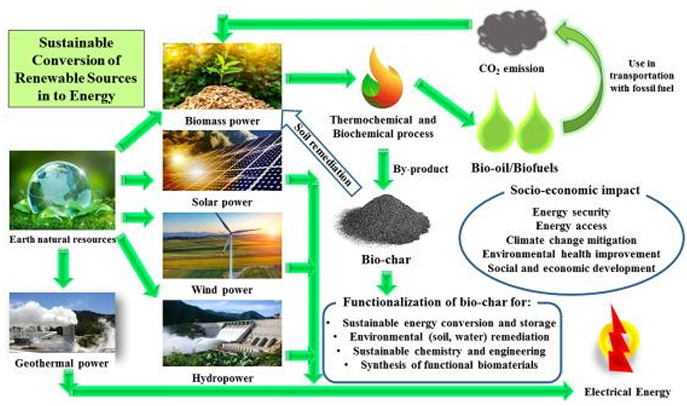
Asia Pacific Academy of Science Pte. Ltd. (APACSCI) specializes in international journal publishing. APACSCI adopts the open access publishing model and provides an important communication bridge for academic groups whose interest fields include engineering, technology, medicine, computer, mathematics, agriculture and forestry, and environment.

Issue release: 30 June 2025
This study focuses on Tosa Town, a small city in Japan that is struggling to address the challenges posed by an aging population and digital transformation. Through a literature review and interviews with residents, it explores how local governance and data management impact the citizen-government interface and progress toward the SDGs. Key findings include the development of Tosa Town’s own “Citizen Participation Ladder Model,” which emphasizes a progressive participation framework that moves from receiving information to participating in decision-making, with tools specific to Tosa Town. Furthermore, integrating data management with this model can enhance citizen engagement in data collection, processing, and utilization, thereby improving policy alignment with community needs. This study highlights the critical role of the citizen-government interface and strategic data management in advancing the SDGs, offering insights for similar cities.
Issue release: 30 June 2025
Climate change is a major public health hazard and a critical component of sustainable development. Understanding public perceptions of these risks is crucial for developing effective local environmental policies that contribute to health and sustainability goals. This research aimed to characterize the perceptions of an adult Portuguese population regarding climate change and its health impact and to examine their awareness of and compliance with municipal policies. The choice of Cascais as a case study reflects its urban character, exposure to climate risks, and its proactive stance in local environmental policy. We conducted research on the environmental programs/guidelines implemented in the urban municipality of Cascais. Subsequently, we employed an online survey to gather data on the perceptions of 200 adults residing/working in Cascais. People with higher awareness are more likely to engage in environmentally conscious behaviors, essential for sustainable development. However, many respondents were unaware of municipal programs and did not participate. Perceptions of climate risk and action priorities varied by sex, age, and education. Improved communication and awareness-raising are needed. This study contributes to the broader understanding of environmental perception by highlighting the influence of demographic factors on climate-related knowledge and behavior. It also demonstrates the value of integrating public perception data into municipal policy planning and sets a replicable framework for comparative research across urban contexts. Incorporating citizens’ perceptions can help municipalities develop effective, community-adapted policies, fostering inclusive and resilient local climate actions to protect public health.
Issue release: 30 June 2025
The issue of climate change cannot be overemphasized considering its negative repercussions on individuals, households, the environment, and nations at large. This necessitates urgent action, as highlighted by sustainable development goal (SDG) 13, which emphasizes how urgent it is to combat climate change and its effects. Innovative waste management is crucial as it helps reduce negative impacts of climate change while supporting social and economic sustainability. This paper contributes to climate change discourse by exploring the association between waste management practices and climate change perceptions. Specifically, this paper has four objectives: (1) examine the current waste management practices currently adopted by residents, (2) determine whether there is an association between waste management practices and climate change perceptions, (3) explore waste management practices that could help mitigate climate change-related challenges, and (4) investigate the current waste-sorting activities within the community. A structured questionnaire is utilized for the data collection. Pearson’s Chi-square test is used to assess the association between waste management practices and climate change perception variables (such as rainfall and temperature). The results show, among other things, that the current waste management practices are landfill, open dumping, burning, and municipal waste collection. It is also revealed that there is a significant association between rainfall, extreme weather events like flooding, temperature, and waste management practices. Furthermore, recycling, reuse, and waste reduction are among the practices identified as having the potential to mitigate climate change-related challenges. Finally, it is revealed that residents sort their waste into plastic and paper. Given the significant association between climate change perceptions and waste practices, educational campaigns that connect waste management to perceived climate change impacts should be prioritized. Specifically, stakeholders should include climate literacy in municipal waste policies and community sensitization efforts. In addition, stakeholders should develop targeted programs that explain how poor waste disposal contributes to flooding, rising temperatures, and pollution.
Issue release: 30 June 2025
Single-use plastic bags remain a critical contributor to plastic pollution, with ecological impacts ranging from terrestrial litter to marine ecosystem degradation. In response, governments worldwide have introduced financial disincentives, regulatory restrictions, and educational campaigns to curb their consumption. However, the relative effectiveness and sustainability of these interventions remain contested. This systematic review followed PRISMA 2020 guidelines. A comprehensive search was conducted in the Web of Science Core Collection using the Boolean string (“levies” OR “charge”) AND (“single-use plastic” OR “plastic bag”), yielding 2445 records. After applying filters for publication year (2007–2025), article type, and English language, 10,496 records were screened. A total of 136 full-text articles were assessed for eligibility, 16 met the inclusion criteria. Findings revealed that economic instruments, particularly levies and charges, consistently produced the most substantial reductions in plastic bag consumption. Regulatory and campaign-based approaches improved awareness but lacked durability unless coupled with financial disincentives. Educational and social-norm interventions reinforced pro-environmental behaviours, amplifying compliance and long-term sustainability when integrated with levies. Overall, multi-layered strategies combining economic, regulatory, and cultural levers were the most effective. Economic instruments are necessary but not sufficient on their own. Integrated approaches by pairing charges with enforcement, education, and social-norm reinforcement to offer the greatest potential to reduce plastic bag use and align with global sustainability goals.
Issue release: 30 June 2025
This study explores the importance of integrating environmental policies with aesthetic education. It delves deeply into the ecological wisdom embedded in traditional culture to identify its relevance to modern environmental protection. First, it presents the crucial role those environmental policies play in contemporary society and explains the significance of aesthetic education. From a historical perspective, it then examines traditional views of nature and ecological conservation awareness, proposing ways to apply these insights to current environmental practices. Subsequently, the study develops an aesthetic education system grounded in environmental policies, detailing the principles for curriculum design as well as the development and utilization of teaching resources. Finally, it establishes an evaluation and feedback system to ensure educational effectiveness and suggests continuous improvement strategies. Overall, this research provides new perspectives and practical approaches for integrating environmental protection with aesthetic education.
Issue release: 30 June 2025
This study examines the factors influencing rural household engagement in agricultural entrepreneurship in Kasai Oriental. Despite the coexistence of farming activities with a thriving artisanal diamond mining sector, the region continues to experience persistently high unemployment, poverty, and food insecurity. In front of such challenges, agricultural entrepreneurship may hold the alleviating keystone. To investigate determinants of agricultural entrepreneurship engagement, the study lies on fixed-effects logit model to control unobserved heterogeneity at the village level. Key findings indicate that self-efficacy significantly increase the likelihood to engage in agricultural entrepreneurship, while fear of failure substantially reduces it. Access to land and participation in informal credit groups also exert positive influences on decision to engage in entrepreneurial activity. Conversely, demographic factors reveal lower engagement among younger, more educated individuals, and big households, likely due to attraction of get-quick-rich artisanal mining perceived as offering high income. Additionally, land conflicts and proximity to mining sites further diminish the probability of engaging in agricultural ventures. Based on these results, policy interventions must focus on vocational training, psychological support, improved access to credit and land. Such efforts should specifically target youth and educated rural residents to enhance the attractiveness and sustainability of the agricultural sector. Thus, this study contributes to a nuanced understanding of the multifaceted drivers of rural agricultural entrepreneurship in the context of mining region and provides actionable insights for targeted strategies to foster sustainable rural economic development.
Issue release: 30 June 2025
With the rise of the global concept of green healthcare, the role of physical therapy in transforming healthcare policies has been further extended to the fields of resource conservation and environmental sustainability. Using a systematic literature review methodology and taking South Korea as a representative case, it systematically analyzes how physical therapy, through non-pharmacological interventions, preventive services, and the application of digital technologies. It found that physical therapy can significantly reduce the consumption of medical resources, decrease the generation of medical waste, and improve service efficiency. It also explores the evolution of laws of physical therapy in terms of policy frameworks, educational approaches, and service delivery models. The research shows that South Korea has made physical therapy the core carrier of environmentally friendly medical interventions by integrating green technologies, optimizing service processes, and reconstructing the primary service network. Thus, it promotes the innovation of healthcare policies towards low-carbon and high-efficiency directions. Driven by the continuous evolution of healthcare policies, physical therapy has transformed from a tool for postoperative rehabilitation into the main body of data-based and legalized public health interventions, participating in health governance, and achieving quantifiable results, and cost-effectiveness in aspects such as accessibility, user awareness, fairness, and effectiveness. These reform practices provide a law-based governance paradigm for global health policy transformation, offering empirical references for countries to optimize healthcare governance frameworks through institutional innovation. Particularly in critical areas such as health equity, well-being in aging populations, and integrated community care, physical therapy demonstrates substantial structural institutional value. This paper recommends that, during healthcare policy transitions, countries should strengthen the institutional integration of physical therapy from multiple dimensions, including legal frameworks, financial support, and professional training, to enhance system resilience and promote comprehensive health and well-being.
Issue release: 30 June 2025
The digital transformation of global supply chains seeks to enhance transparency, efficiency, and security, with blockchain emerging as a key enabling technology. This paper examines Maersk’s TradeLens initiative, a blockchain-powered shipping platform, as a case study within the broader context of digital supply chain innovation. Although initially launched to revolutionize maritime logistics, TradeLens was discontinued in early 2023 due to challenges in scaling adoption and achieving commercial viability. Through a critical evaluation of the structural, strategic, and economic barriers that hindered its success, this study offers valuable insights into the practical limitations of blockchain in complex supply chain environments. Building on these insights, we propose a conceptual framework that integrates data acquisition, advanced analytics, and digital trust mechanisms to guide future digital transformation efforts. Our findings highlight the necessity of industry-wide collaboration, interoperable systems, adaptive governance, and sustainable business models to ensure the long-term success of blockchain-enabled supply chains.

Prof. Kittisak Jermsittiparsert
University of City Island, Cyprus






It is with deep regret that we announce the cancellation of the Forum on Sustainable Social Development & Computing and Artificial Intelligence, originally scheduled for June 15, 2025.


 Open Access
Open Access